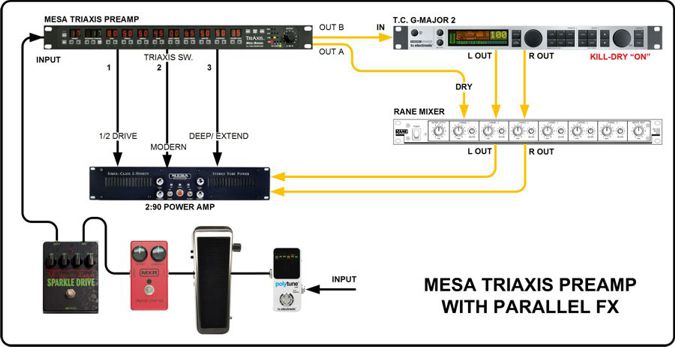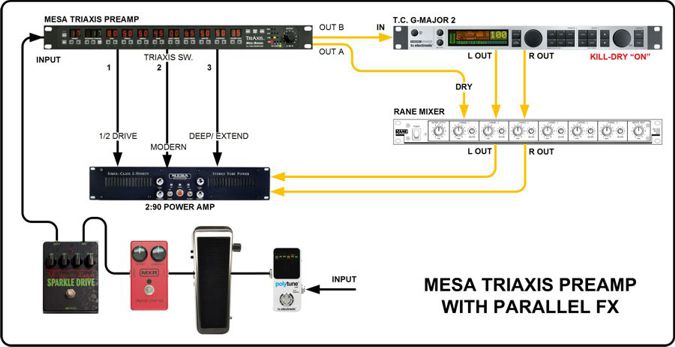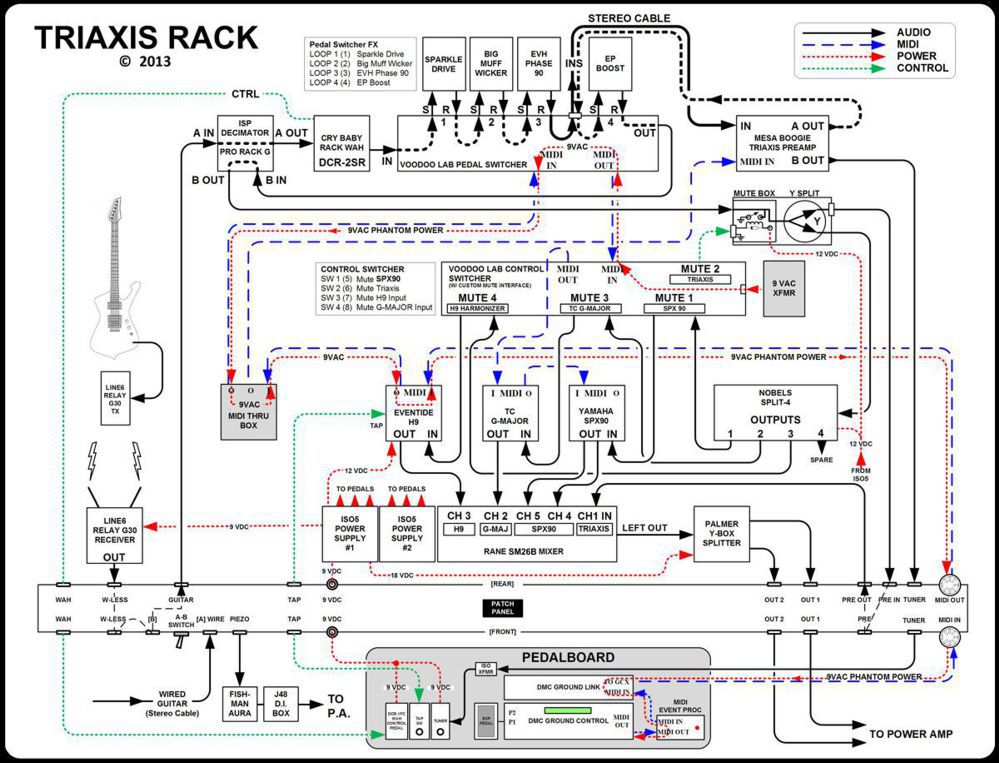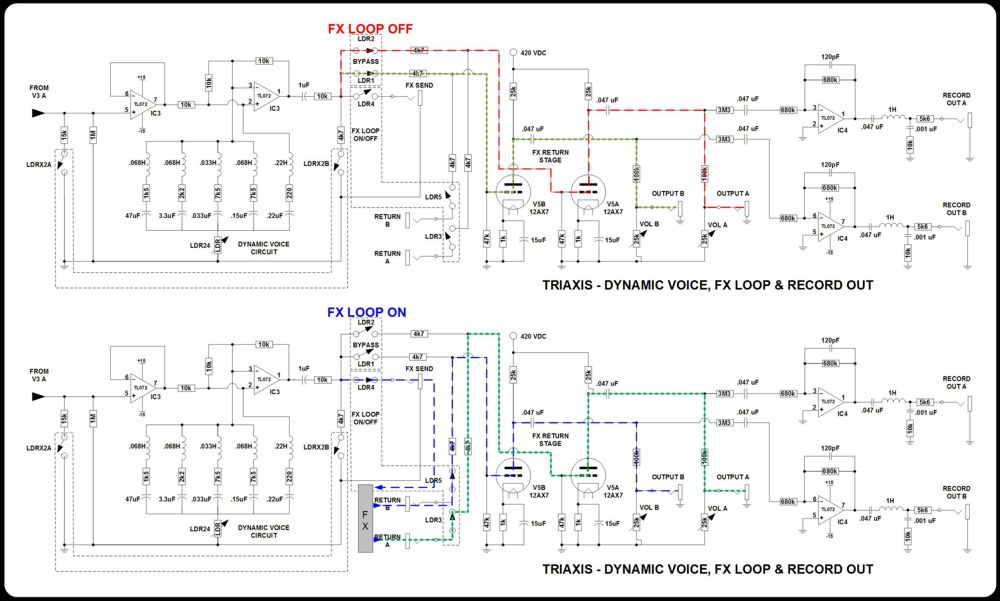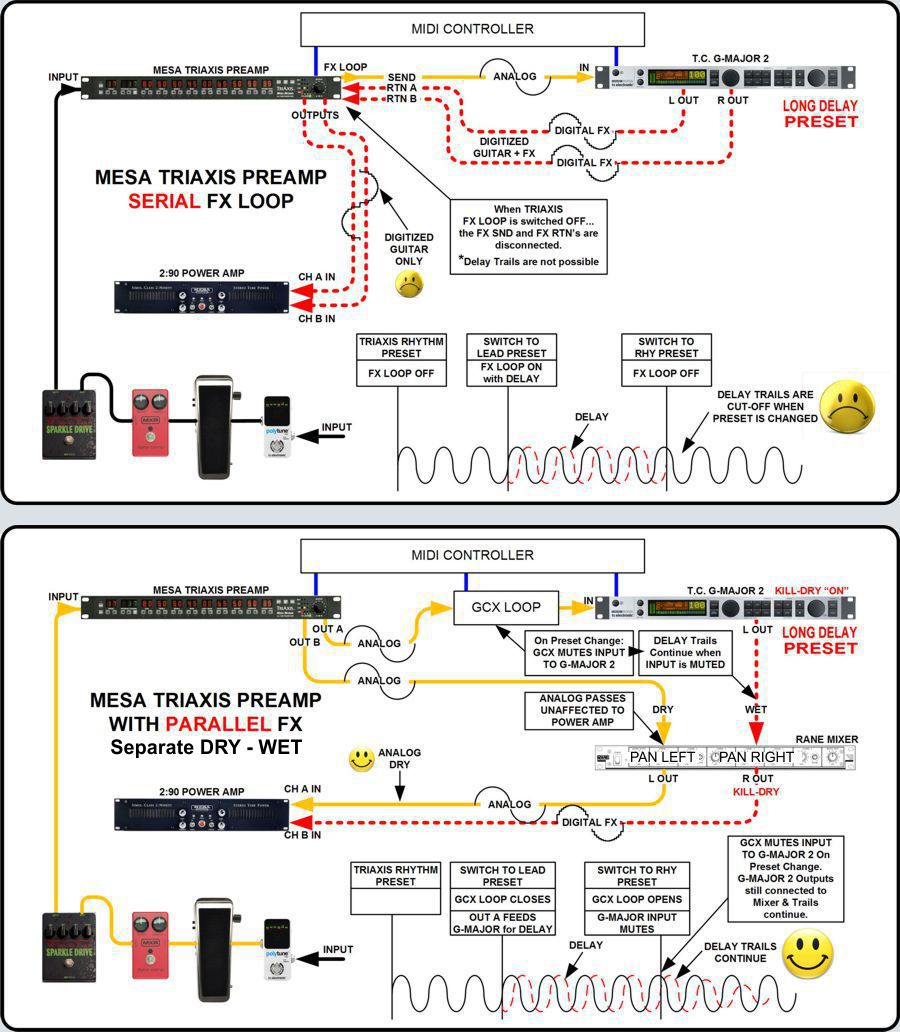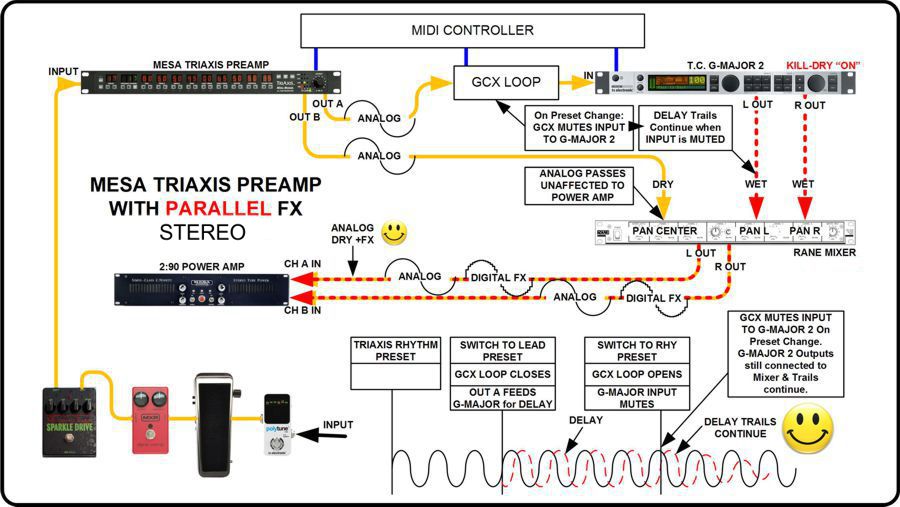I just remembered the only draw back to using the TRIAXIS FX LOOP...
When you bypass the FX loop in the Triaxis, it disconnects the FX Send and Return Jacks which means that any delay trails or reverb decay, from your FX processor, are abruptly cut.
With a parallel system you can mute the FX inputs when switching patches so that the delay trails or reverb decays carry on...here's an example...
Imagine that you are running an FX processor in the
Triaxis FX loop and you have just switched in a High Gain Sound with a long delay for your hot guitar solo. (The delay trails filling in as you play).... Then you switch back to your rhythm sound that has no delay, the Triaxis FX loop disconnects your FX processor and all of your delay trails abruptly cut-off.... I'm sure that you've noticed this when you turn the Triaxis FX loop off...

Imagine that you are running a
Parallel FX system and you have just switched in a High Gain Sound with a long delay for your hot guitar solo with your delay filling in as you play.... Then you switch back to your rhythm sound that has no delay. If you have a GCX to mute the FX processor
Input and leave the FX processor outputs connected to the mixer with your dry signal, the delays trail for a few seconds, (or longer), after you switch patches... just like you would expect on a studio recording. Bob Bradshaw has made his living designing parallel systems like this for Steve Lukather, The Edge and EVH.
The important thing is that you are happy with your sound

.. I would experiment with the above so that you can see how it makes your live sound more spectacular as it will sound more like the guitar delay on your recordings.
Here's some more pics...
Note: in the parallel example above, the dry is panned left and the wet is panned right...if you pan the dry and wet to the center, the dry/wet mix will go to both channels of the power amp. This is more useful in a live setting as both channels have dry+FX and you only have to mic one cabinet. (For the above, I separated the wet and dry into separate channels of the power amp for clarity.)
Normally you would want to run a separate amp for dry and FX, or like Brian May who has three amps... dry, wet left and wet right. (separating the FX from the dry, by the use of separate amplifiers, decreases the inter-modulation distortion in your dry signal; albeit making it more difficult for live micing.)
Panning the Dry to center and the FX Left output Panned hard Left and the FX Right output Panned hard Right gives you a Stereo set-up...(Dry appears in the middle)
seeya
Joe




